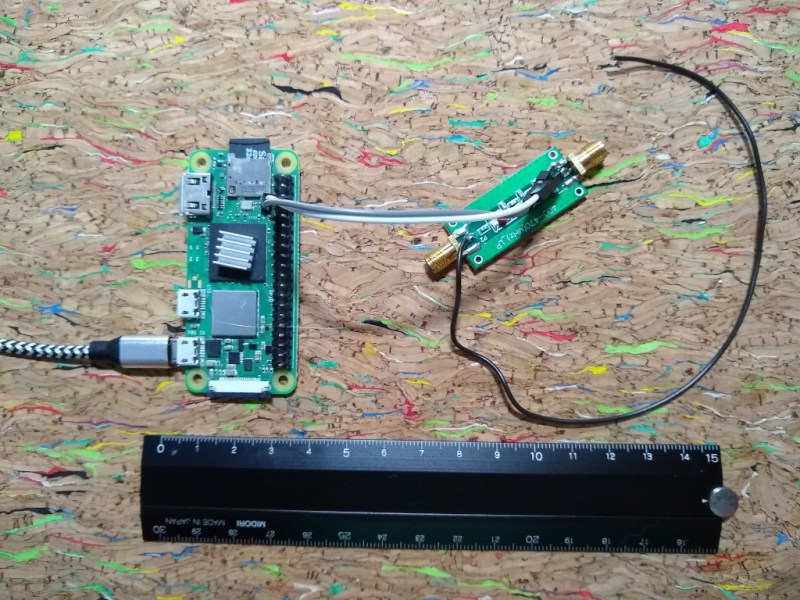Ceiling fans seem to be an oft-misunderstood or overlooked household appliance. As such, they seem to have missed a lot of the IoT wave. Sure, you can get smart controllers for them to plug into your home automation system of choice, but these mostly rely on temperature sensors, simple timers, or voice commands. There’s a lot more to a ceiling fan than maintaining a comfortable temperature, as [EJ] demonstrates with this smarter ceiling fan build.
A big part of the job of a ceiling fan is to improve air circulation, which can help a room from feeling “stuffy”. This feeling is usually caused by excess CO2 as a result of respiration in an area where the air is not moving enough to exhaust this gas. Not only does [EJ]’s controller make use of a temperature monitor for controlling the fan automatically, but there is also a CO2 sensor integrated to improve this aspect of air quality when needed.
The entire build is based on a Raspberry Pi Zero, and nothing needed to be changed about the ceiling fan itself for this added functionality because it already included a radio-based remote control. With some monitoring of the signals produced by the remote, the Raspberry Pi was programmed to mimic these commands when the surrounding sensors captured a condition where [EJ] would want the fan on. There’s also a manual control button as well, so the fan control is not entirely in the hands of the computer.
For a little more detailed information about this build, there’s a separate project page which details a lot of the information about the RF waveform capturing and recreation. And, if you want to take your fan to the next level, take a look at this one which focuses on building a smartphone app to control the fan instead.
















As CO2 is heavier than air, it would help to have the sensor mounted low in the room.
Amen! But, still, this is an incredibly useful idea for controlling the device (fan) that would either disperse CO2 more evenly or could alert occupants to a level causing sufficient concern or alarm.
The CO2 emitted by human respiration is well-mixed and warmer than the surrounding air, at about 4.5% concentration, and will not “seperate out” and accumulate near the floor.
I concur.
Does anybody know what the sensor is?
The “Pointless Gimmick 3000”, guaranteed to never be accurate and to drift further out of calibration over time. I really don’t know why people bother with them, CO sensors on the other hand are actually useful.
As long as you use a non-dispersive infrared sensor you won’t have an issue. The so-called eCO2 sensors estimate CO2 from VOC measurements and can be very inaccurate depending upon what’s in the air.
I have the CO2 sensor on a nightstand. It is in the room but not near my clock/fan controller. But it doesn’t matter really where the sensor is just somewhere in the room.
I’ve been running setup with some thresholds to turn the central furnace fan on at a low level of 650 ppm (basic occupancy detection) and then the HRV at 800ppm to bring fresh air in. Just a mh-z19c and dht22 monitored with an ESP32 controlling a pair of relays.
Next step is better monitoring of outside dew point as I ended up bringing a lot of humidity in this summer, so balancing co2 and rh% levels is a challenge.
A script checks the esp every minute, logs and posts a graph http://www.flyinglow.ca/furnace/co2_week.png
Wow, well done, Super useful !
A desiccant wheel can allow for constant turnover of air with stabilisation of temperature and humidity. Yep one simple thing that has been around for many years can actually meet those requirements, unlike complex technical solutions.
Why do you think CO2 makes a room stuffy? I guess what do you mean by stuffy? light-headed?
Your product would not be popular in Korea. Fan death.
RH% is what makes rooms stuffy. The higher the RH% the more difficult it is for your body to cool itself at any particular ambient temperature.
CO2 at 1000 ppm is considered stuffy. That is the threshold where you start to see cognitive decline.
I bought a large house from some South Koreans, and can confirm, they removed every single fan in the entire house.
A little bit off topic, but germane never the less, I hope. Could hackaday commit to using the subscript 2 character in the likes of CO2? I tried to copy and paste that from https://en.wikipedia.org/wiki/Carbon_dioxide where my browser shows it nicely, but it doesn’t seem to work here in the reply composition box.
Hmm. Here’s a try at using the standard html sub tag: CO2.
Hmmph. The bold tag worked. The sub tag didn’t. God bless standards.
I made co2 monitoring in a both floors of a private building with huge void between floors and the conclusion was that CO2 despite being heavier, still warmer and rising up. Even though there is no-one upfloor, CO2 is higher.
I use fan together with skylight with velux automatic that open skylight using own CO2 sensor, so fan spinning backwards to push air up to speed up air exchange. Check my geodesic.life for more details